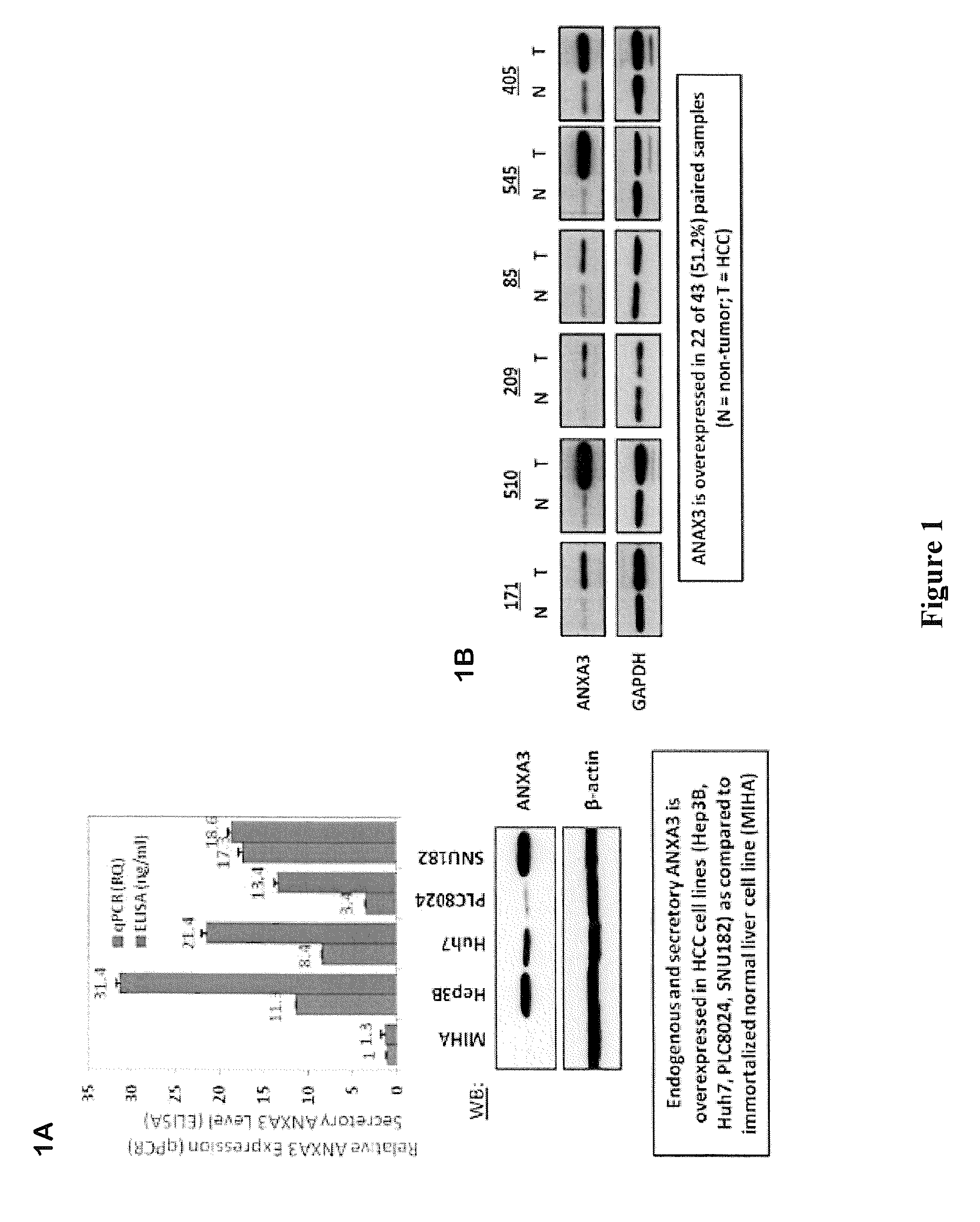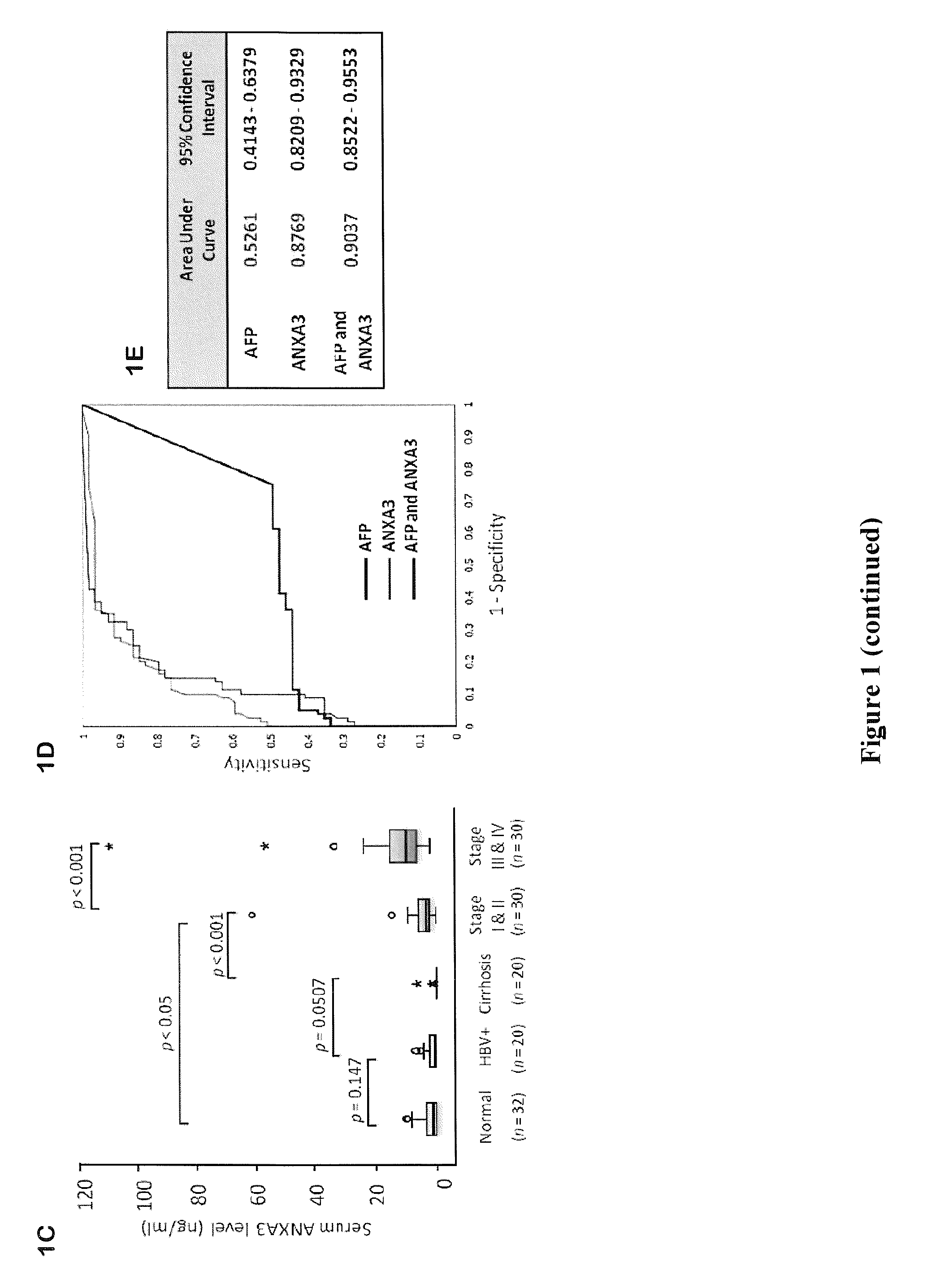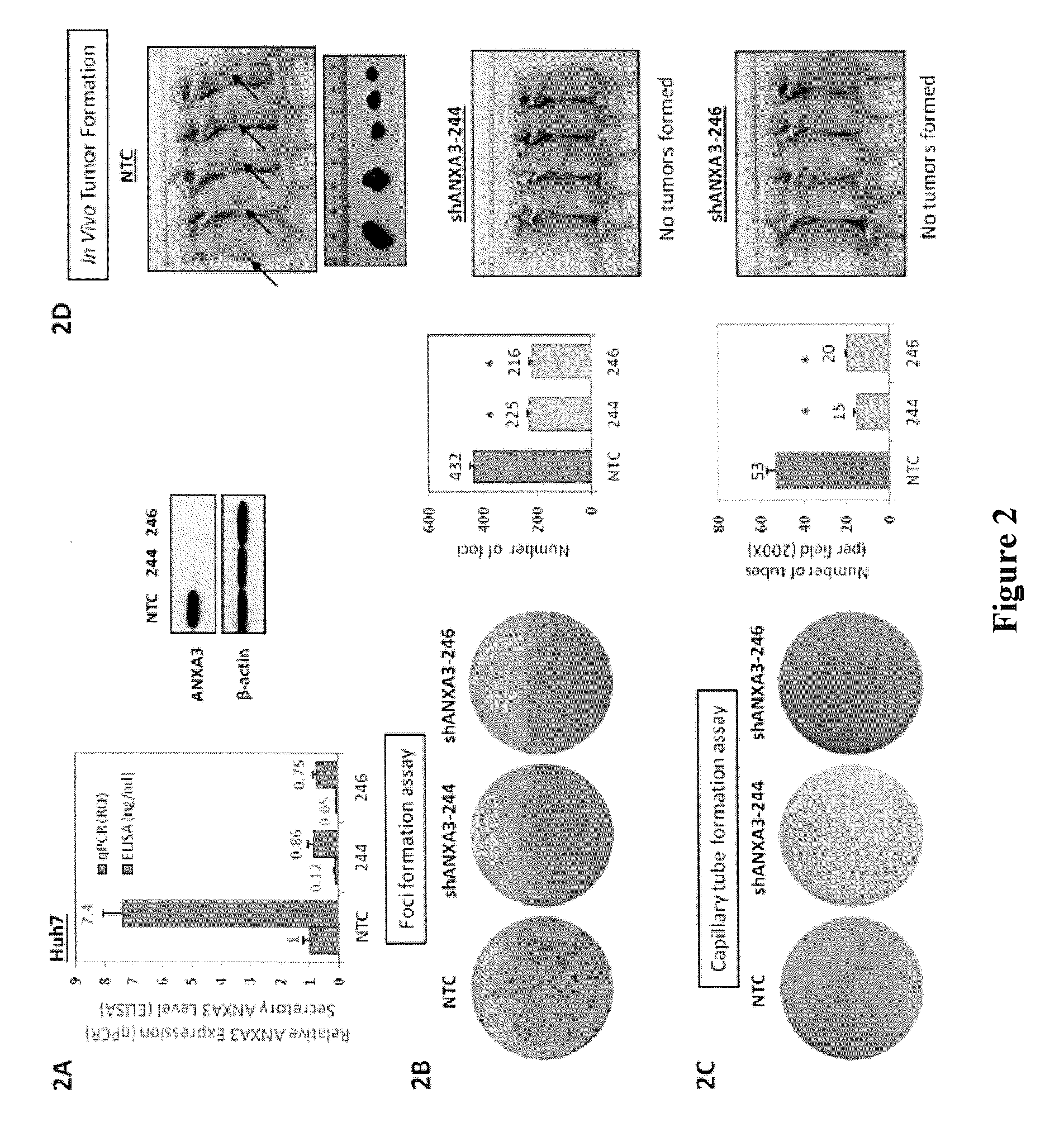Use of annexin A3 as a diagnostic and prognostic biomarker and therapeutic target for treating hepatocellular carcinoma
a technology of hepatocellular carcinoma and annexin a3, which is applied in the direction of instruments, drug compositions, peptides, etc., can solve the problems of two potentially curative treatment options that are limited, the overall response rate to this treatment is low, and the shortage of liver grafts, etc., to achieve the effect of inhibiting the expression of anxa3 protein
- Summary
- Abstract
- Description
- Claims
- Application Information
AI Technical Summary
Benefits of technology
Problems solved by technology
Method used
Image
Examples
example 1
Preferential Expression of Endogenous and Secretory ANXA3 in HCC Cell Lines and Clinical Samples
[0146]Western blot and ELISA were carried out to evaluate the endogenous and secretory expression of ANXA3, respectively. Endogenous and secretory ANXA3 expression, at both genomic and proteomic levels, was first examined in a panel of liver cell lines by real-time qPCR, Western blot and ELISA. As compared with the immortalized normal liver cell line MIHA, all four HCC cell lines (Huh7, Hep3B, PLC8024 and SNU182) expressed significantly more ANXA3 expression (FIG. 1A).
[0147]Western blot analysis on 43 paired primary HCC and their corresponding non-tumor tissues revealed a frequent up-regulation of ANXA3 expression in HCC tissue. A cut-off value of T / N>2 was used to determine ANXA3 overexpression in HCC patients. Twenty two (51.2%) of the 43 cases examined showed more than two-fold increase in ANXA3 expression in HCC as compared with their non-tumor counterpart (FIG. 1B). Secretory ANXA3 e...
example 2
Role of ANXA3 in HCC Initiation and Development
[0148]The functional role of ANXA3 in driving tumor initiation, self-renewal, invasion, migration, angiogenesis and resistance to apoptosis and chemotherapy was investigated by a lentiviral based shRNA knockdown approach to SEQ ID. NOs: 2 and 3.
[0149]The effect of ANXA3 on tumor initiation was investigated by tumorigenicity assay in immunodeficient nude mice. ANXA3 repressed clones in Huh7 and PLC8024 HCC cells failed to give rise to tumors when implanted subcutaneously in immunodeficient nude mice.
[0150]The effect of ANXA3 on self-renewal was investigated by a spheroid formation assay in vitro. ANXA3 knockdown resulted in a diminished ability of Huh7 and PLC8024 HCC cells to initiate spheroid formation and propagate in serial secondary and tertiary passages (p-value<0.05).
[0151]The effect of ANXA3 on invasion and migration was evaluated using Matrigel invasion and transwell migration assays, respectively. ANXA3 knockdown resulted in a ...
example 3
ANXA3 Regulates Both Cancer and Stem Cell-Like Properties in HCC
[0153]Functional studies involving lentiviral-based knockdown approach found ANXA3 to regulate both cancer and stem cell-like properties. The inventors generated stably repressed ANXA3 Huh7 HCC cells using a shRNA lentiviral knockdown system. Of the 5 ANXA3 shRNA clones, 244 and 246 showed the most dramatic ANXA3 inhibition compared with non-target control, as confirmed by qPCR and Western blot, and thus were chosen for further studies (FIG. 2A). Note that endogenous ANXA3 repression also resulted in a diminished level of secretory ANAX3 produced, as detected by ELISA (FIG. 2A). Repressing ANXA3 expression in Huh7 resulted in a significant decrease in the efficiency of the cells to form foci when compared with NTC (FIG. 2B; * p-value<0.05). Conditioned medium collected from Huh7 cells with or without ANXA3 repressed showed that ANXA3 knockdown would result in a decreased ability of the cells to stimulate capillary tube ...
PUM
| Property | Measurement | Unit |
|---|---|---|
| concentration | aaaaa | aaaaa |
| concentration | aaaaa | aaaaa |
| concentrations | aaaaa | aaaaa |
Abstract
Description
Claims
Application Information
 Login to View More
Login to View More - R&D
- Intellectual Property
- Life Sciences
- Materials
- Tech Scout
- Unparalleled Data Quality
- Higher Quality Content
- 60% Fewer Hallucinations
Browse by: Latest US Patents, China's latest patents, Technical Efficacy Thesaurus, Application Domain, Technology Topic, Popular Technical Reports.
© 2025 PatSnap. All rights reserved.Legal|Privacy policy|Modern Slavery Act Transparency Statement|Sitemap|About US| Contact US: help@patsnap.com



